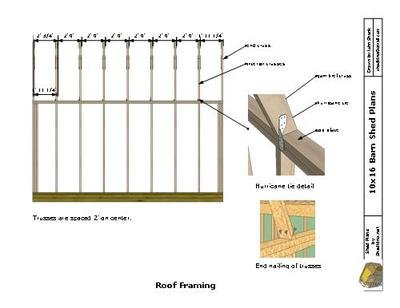Labradors, renowned for their agility and speed, can run up to speeds of 12-14 miles per hour. But have you ever wondered how fast can a lab run when they are at their peak? In this article, we’ll delve into the fascinating world of canine athleticism and explore the factors that influence a lab’s running speed. Join us on a thrilling journey to uncover the secrets behind these remarkable four-legged athletes.
How Fast Can a Lab Run: Exploring the Speed of Labrador Retrievers
Welcome to our exciting adventure into the world of Labrador Retrievers and their incredible speed! Labradors are renowned for their agility, athleticism, and boundless energy. In this blog post, we’ll delve into the fascinating topic of how fast these beloved canine companions can run. Get ready to be amazed by the speed and grace of these lovable dogs!
The Speedy Nature of Labrador Retrievers
Labrador Retrievers are one of the fastest dog breeds, known for their impressive speed and endurance. These dogs were originally bred as hunting companions, and their speed and agility were essential for retrieving game in the field. Today, Labradors excel in various canine sports such as agility, flyball, and obedience trials, showcasing their remarkable speed and athleticism.
Understanding the Anatomy of a Speedy Labrador
Labrador Retrievers have a unique anatomy that contributes to their exceptional speed. Their slender bodies, powerful muscles, and sleek, water-resistant coats are designed for swift movement and endurance. Labradors also have webbed feet that help them navigate various terrains with ease, making them well-suited for running and retrieving objects over long distances.
Factors Affecting a Labrador’s Running Speed
Several factors can influence how fast a Labrador can run. One of the key factors is the age and health of the dog. Young, healthy Labradors tend to be faster than older or less active dogs. Additionally, genetics play a significant role in determining a Labrador’s speed, as some dogs may inherit traits that make them faster or more agile than others.
Training and Conditioning
Proper training and conditioning can also impact a Labrador’s running speed. Regular exercise, agility training, and conditioning programs can help improve a dog’s speed, strength, and endurance. By providing your Labrador with ample opportunities to run, play, and exercise, you can help enhance their natural abilities and maximize their speed potential.
Labrador Retrievers in Action: Speed Tests and Competitions
Labrador Retrievers are often showcased in speed tests and competitions where their running abilities are put to the test. These events allow owners to showcase the speed and agility of their Labradors while also providing a fun and engaging experience for both dogs and spectators.
Popular Speed Events for Labradors
One popular speed event for Labradors is the FastCAT (Coursing Ability Test), where dogs sprint 100 yards in a straight line to see how fast they can run. Another exciting competition is the Lure Coursing, where Labradors chase a mechanical lure around a course, testing their speed and agility in a controlled environment.
Fun Facts About Labrador Retrievers’ Speed
Here are some fun facts about Labrador Retrievers and their impressive speed:
- Labradors can reach speeds of up to 12-15 miles per hour when running at full speed.
- Labradors are excellent swimmers, capable of swimming at speeds of 4-6 miles per hour for long distances.
- Labradors have an innate love for running and playing, making them natural athletes with boundless energy.
In conclusion, Labrador Retrievers are incredibly fast and agile dogs known for their impressive speed and athleticism. Whether they are sprinting in a speed test or chasing a ball in the backyard, Labradors never fail to showcase their boundless energy and enthusiasm for running. By understanding the factors that influence a Labrador’s speed and providing them with the proper training and exercise, you can help your furry friend reach their full running potential and enjoy a healthy, active lifestyle. So next time you see a Labrador running, take a moment to appreciate the grace and speed of these amazing dogs!
We hope you enjoyed this exploration into the world of how fast a Labrador can run. Stay tuned for more exciting adventures in the world of dogs and their incredible abilities!
Lab: How Fast Can You Run?
Frequently Asked Questions
How fast can a lab run samples?
A lab can typically run samples at varying speeds depending on the equipment and protocols in place. Some labs may process samples quickly within minutes, while others may take a few hours to complete the analysis. The speed of sample processing can also depend on factors such as the complexity of the test being conducted and the number of samples being processed simultaneously.
What factors can affect the speed at which a lab can run samples?
Several factors can impact the speed of sample processing in a lab, including the type of equipment available, the expertise of the lab technicians, the complexity of the tests being performed, the number of samples to be processed, and the efficiency of the lab’s protocols. Labs that are well-equipped and have experienced staff members tend to process samples more efficiently.
Can labs expedite the process to run samples faster?
Yes, labs can take steps to expedite the process and run samples faster. This can include optimizing workflows, utilizing automation where possible, ensuring that equipment is properly maintained, and implementing efficient protocols. By streamlining processes and enhancing workflow efficiency, labs can reduce turnaround times and run samples at a faster pace.
Final Thoughts
In conclusion, the speed at which a lab can run is dependent on various factors such as equipment efficiency, researcher expertise, and experimental design. By optimizing these elements, labs can significantly increase their pace without compromising accuracy. Efficient workflows, streamlined processes, and collaborative team efforts all contribute to how fast a lab can operate. Embracing technology advancements and continuous improvement are key to pushing the boundaries of how fast can a lab run. Ultimately, a well-organized and proactive approach is crucial in achieving quicker turnaround times in laboratory settings.




